Experts: The 10 Best Low-Maintenance Perennials For All The Wow Without The Work
Transform your space with these easy-care flowers!
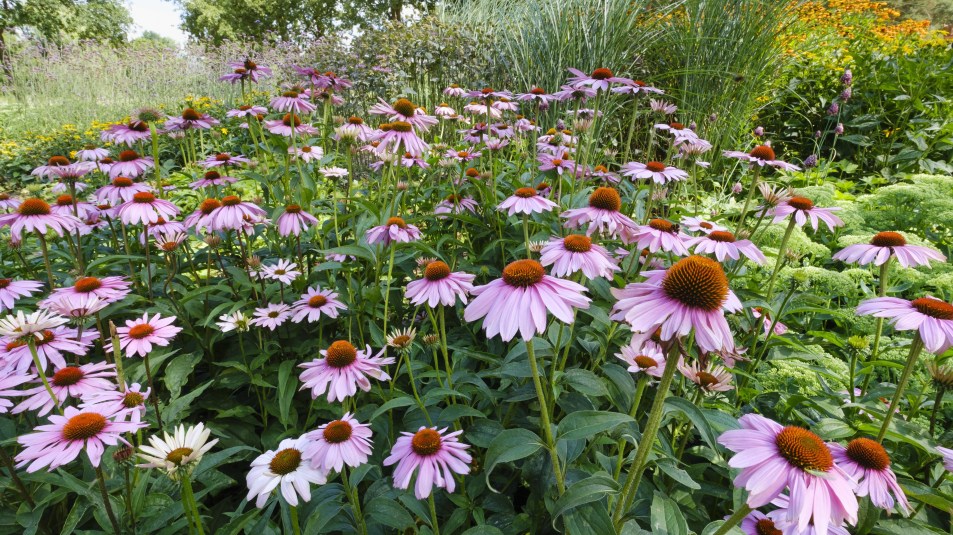
Looking to add a little pizzazz to your outdoor space? Or maybe you have some beds that get overgrown with weeds seemingly overnight. Sure, you could pop in a few annuals, which will bloom like crazy this year and then die over the winter — or you could choose plants that come back year after year (called perennials), saving you time, money and hassle. We tapped experts for recommendations on “set it and forget it,” high-impact perennial flowers out there so you can get all the wow without the work. Read on for the top 10 best perennials for a low-maintenance yard and how to bring their beauty to your yard no matter what USDA Plant Hardiness Zone you live in. Not sure which zone you’re in? Check the USDA’s official map.
What are perennials?
“Perennial flowers are a reliable choice for your outdoor space, since they bloom at the same time every year,” says Jan Johnsen, author of Floratopia and Gardentopia. “They go dormant in winter and reemerge in spring.” Plus, they require less maintenance than annuals, which need to be dug up and replaced every year.
Planting flowering perennials in the yard, along a pathway or around the perimeter of a house is an easy way to add beauty that boosts your curb appeal and transforms your space into a colorful yet calming oasis. (Click through for other tips to boost your curb appeal.)
10. Arkansas Amsonia (Amsonia hubrichtii)
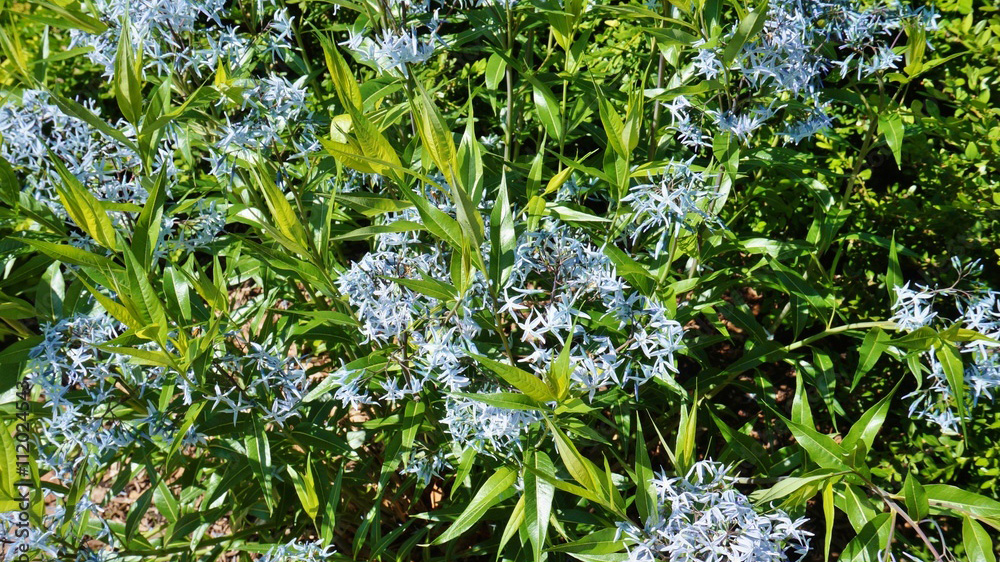
“The fine foliage of Arkansas Amsonia provides multiple seasons of beauty,” notes gardening expert Melinda Myers, author and host of The Great Courses “How to Grow Anything” series. Its icy blue star-shaped flowers appear in spring and the leaves turn a beautiful shade of amber in the fall. “Even the dried foliage adds texture to a winter garden,” notes Myers.
Because the plant tolerates a wide range of soils and those that are occasionally wet, Arkansas Amsonia is a good option for adding rich color to a rain garden — a shallow depression in the ground that collects stormwater, filters it and redistributes it back into the soil. Just be sure to space plants at least 24” apart, as they will grow 24 to 36 inches wide and high.
- USDA Hardiness Zones: 5–8
- Soil conditions: Moist, well-draining soil
- Sun requirements: Give full to part sun, avoiding excessive shade
- Watering schedule: Water at least once per week to keep soil moist
9. Garden or Herbaceous Peonies (Paeonia cultivars)
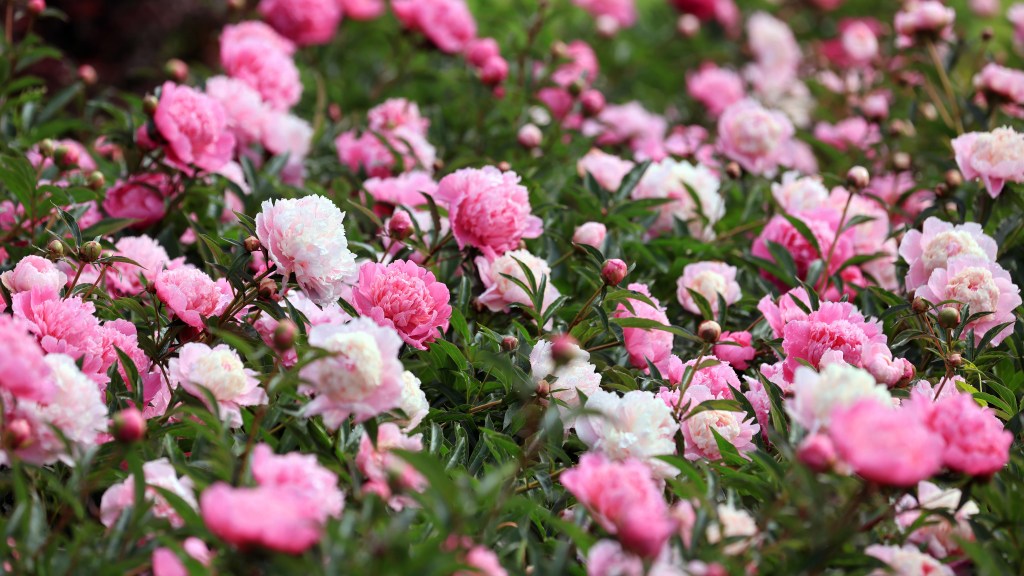
“Long grown in gardens, peonies are a sentimental favorite of many,” says Myers. “Their leaves have a red tinge when they emerge in spring, turn green and serve as a nice backdrop for other flowers in summer, then take on a reddish-purple tinge in the fall.” Depending on the variety, the flowers bloom in mid-to-late spring through early summer. With their fluffy petals and fragrance, they make for beautiful cut-flower bouquets. All peony varieties attract butterflies and are resistant to deer and rabbits.
When planting peonies, be sure to place them in the ground at least 36 inches apart to give them space to show off their beauty and reduce the risk of powdery mildew that can form when there’s not enough air flow on leaves and petals. Peonies can live in the same location and thrive for decades, notes Myers. (Click through to see how you can use kitchen scraps to perk up peonies.)
- USDA Hardiness Zones: 3–8
- Soil conditions: Rich, well-draining soil
- Sun requirements: Give full sun
- Watering schedule: Water well every 5 to 7 days
8. Roses (Rosa)
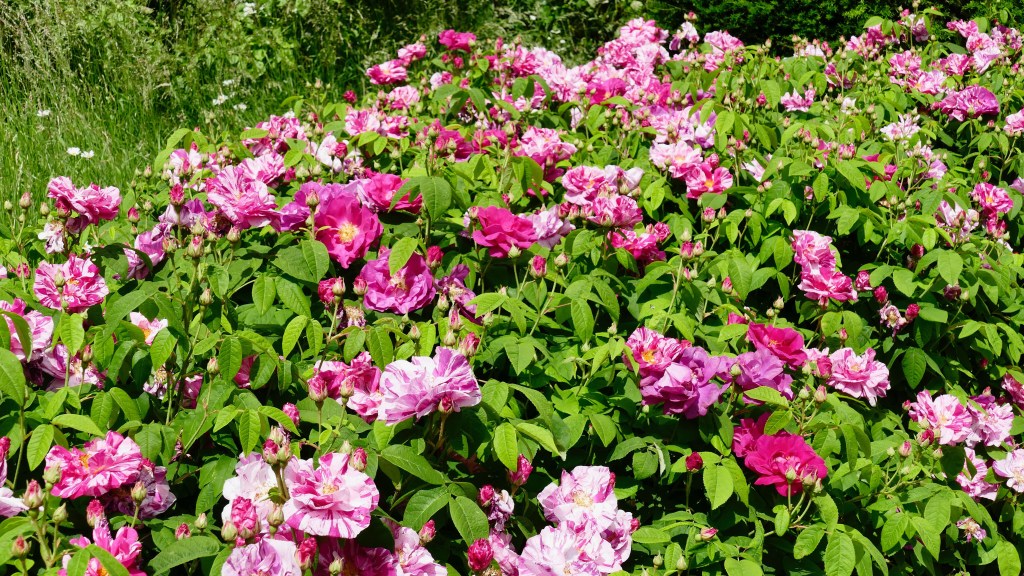
“Roses are perfect for brightening up a bare corner of your yard,” says Johnsen. Not only are the classic blooms visually pleasing, but they also add a lovely, light floral aroma to your outdoor space. They provide a continuous abundance of flowers from the summer through the fall with little upkeep, and they do best in a sunny spot.
Plant roses in a spot that gets eastern sun exposure, which allows the sun to quickly evaporate dew from petals, warding off powdery mildew.
- USDA Hardiness Zones: 5–8
- Soil conditions: Well-draining, slightly-acidic soil
- Sun requirements: Give full sun to part shade
- Watering schedule: Water once or twice per week
7. Meadow Sage (Salvia)
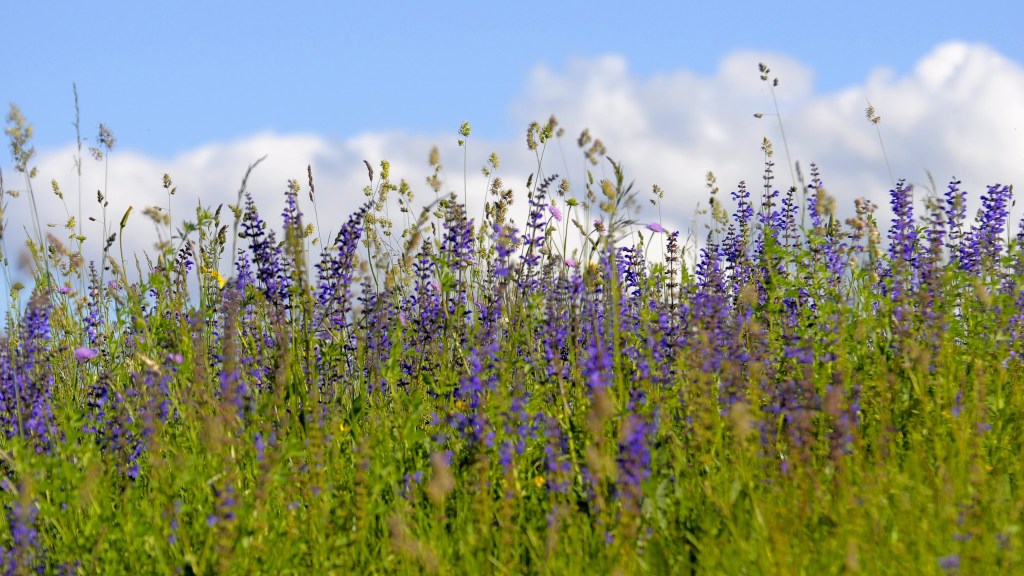
Meadow sage is in the mint family and has an invigorating, light minty aroma that is pleasing to humans but is repulsive to pests. The scent acts as a repellant to keep them out of your garden. (Click through for more ways to pest-proof your yard.) Their cone-shaped, blue-to-purple blooms produce butterfly-attracting nectar, and the stems grow up to 20 inches tall, making them a lovely, lower-profile option for a border planting. Meadow sage is deer- and rabbit-resistant and tolerates hot and dry conditions with ease.
- USDA Hardiness Zones: 4–9
- Soil conditions: Well-draining soil
- Sun requirements: Give full sun
- Watering schedule: Water every 7 to 10 days
6. False Blue Indigo (Baptisia australis)
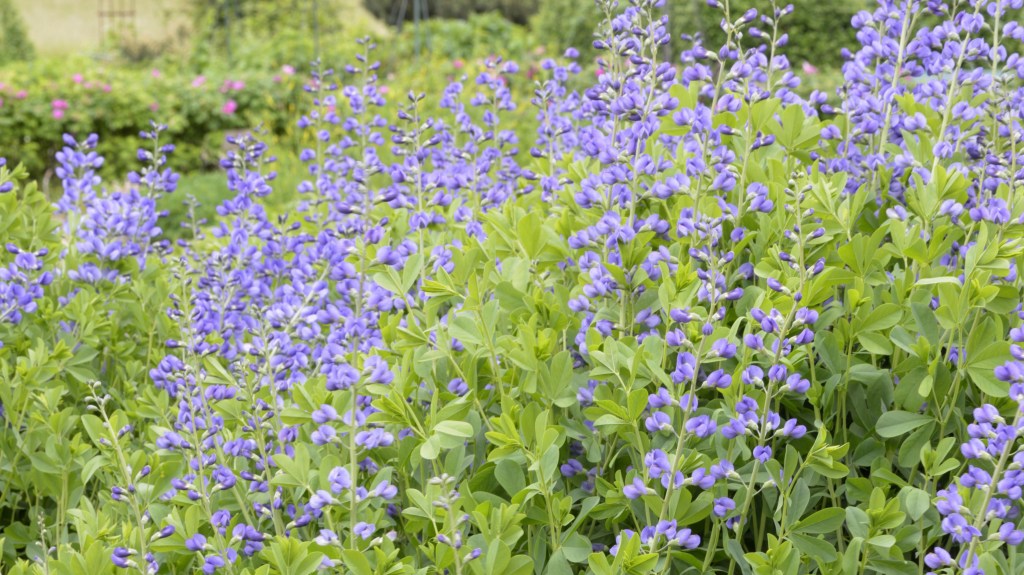
“False Blue Indigo is a North American native plant with eye-catching blue/green leaves that look great all growing season,” notes Myers. Tall spikes of blue, wildflower-like blooms appear in spring to early summer and are followed by inflated pods that turn black in late summer. The pods rattle in the wind and sound like wooden wind chimes, adding interest to the garden during the cold winter months.
The plants are perfect for filling up large flower beds with showy blooms that will grow 36 to 60 inches tall. Once established, False Blue Indigo is drought-tolerant and deer-resistant, making it a great choice for dryer climates or yards that receive frequent wildlife visitors. (Click through for tips to keep deer away from your plants.)
- USDA Hardiness Zones: 3–9
- Soil conditions: Moist, well-draining soil
- Sun requirements: Give full sun to light shade
- Watering schedule: Water deeply at least once per week
5. Coreopsis
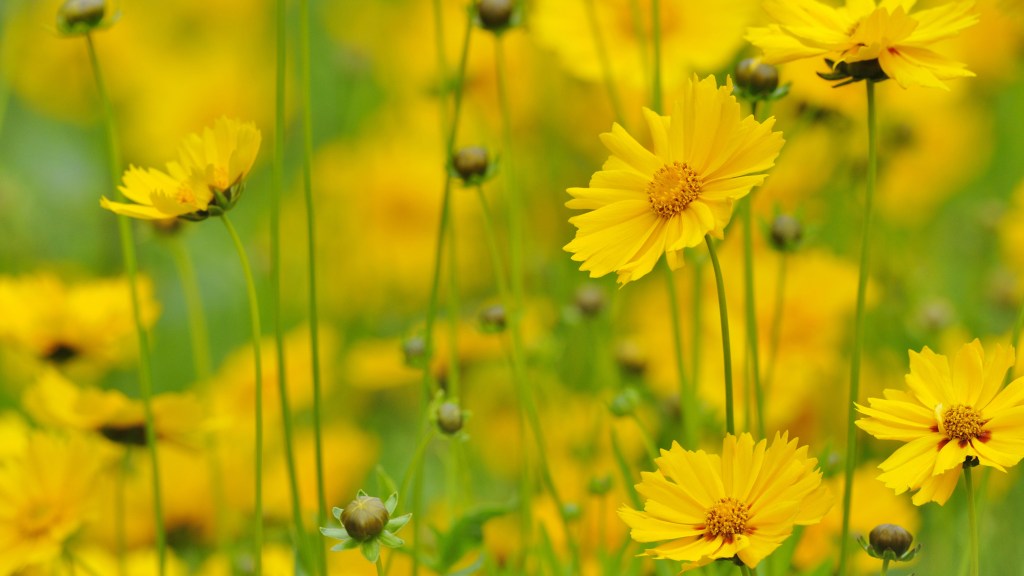
Round coreopsis flowers add sunny color and textural interest to flower beds. Yellow coreopsis grows 24 to 36 inches tall and has a long blooming period, so the flowers will last into late fall. The plant tolerates dry, poor soil very well and can handle part shade, making it a nice choice for an area along a house or fence that receives some shielding from the sun. Once established, these happy-hued stunners will continue to thrive without much tending for years to come.
- USDA Hardiness Zones: 2–11
- Soil conditions: Well-draining soil
- Sun requirements: Give full sun to light shade
- Watering schedule: Water twice per week
4. Butterfly Weed (Asclepias tuberosa)
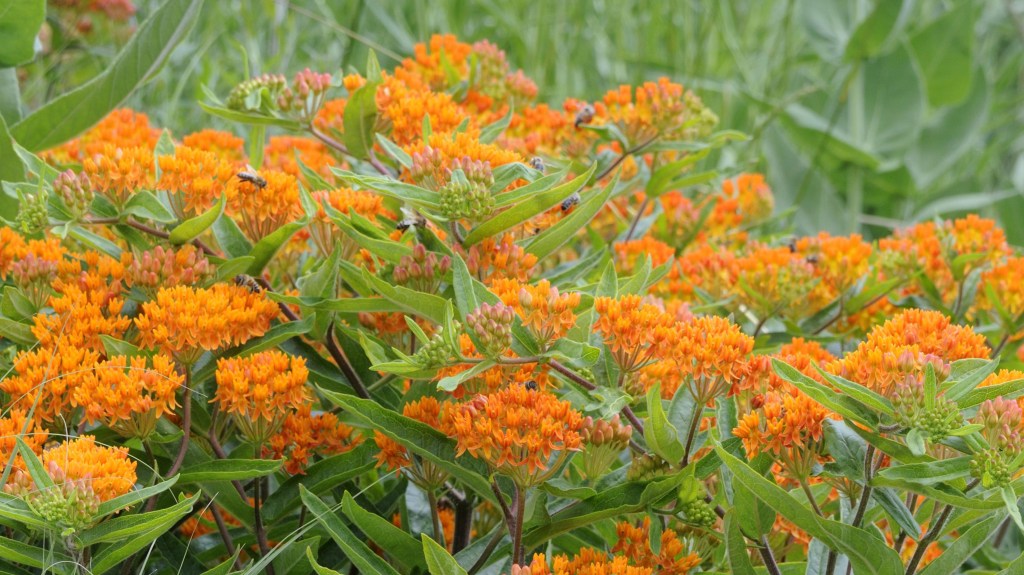
Hummingbirds, butterflies and bees are drawn to the orange butterfly weed — a plant that’s much prettier than its name suggests. Even during a quiet moment, when there are few fliers buzzing around, the small clusters of saturated orange flowers brighten up your space with their sunset-inspired hues.
Once butterfly weed plants are established, they essentially takes care of themselves and are drought-tolerant. Simply trim old growth each spring to keep them looking neat.
- USDA Hardiness Zones: 3–9
- Soil conditions: Well-draining or dry soil
- Sun requirements: Give full sun
- Watering schedule: Only water when soil is dry to the touch
3. Catmint (Nepeta)
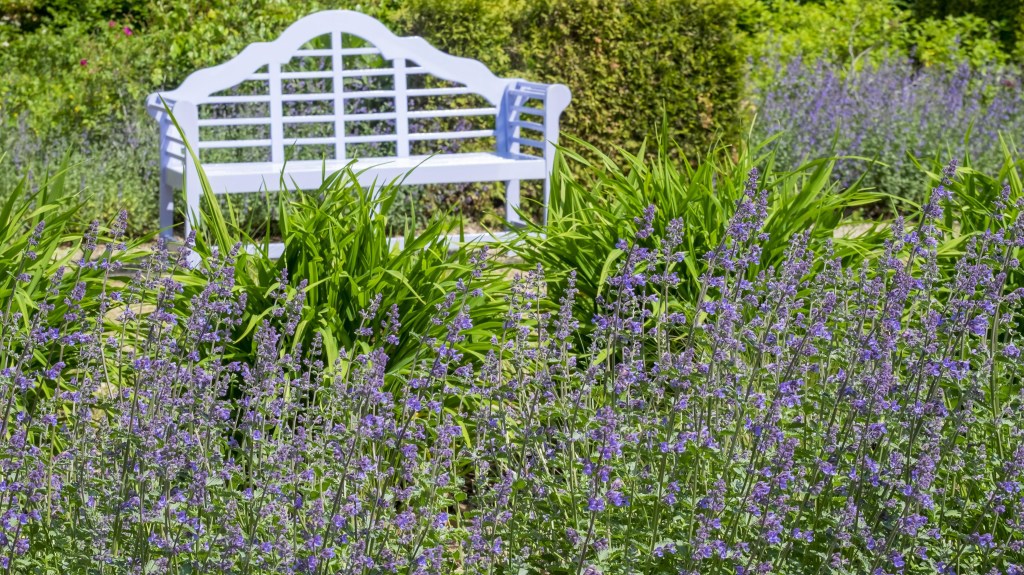
Not only does this low-maintenance perennial provide a continuous burst of beautiful blue-purple blooms from spring throughout summer, but it also adds a welcoming, lemony-meets-minty aroma to your outdoor space! What’s more? No deadheading is needed to keep this stunner flowering — and its gray-green foliage attracts beautiful butterflies, notes Myers. Tip: Select clumping varieties that do not readily reseed or spread aggressively, she says. Some popular clumping varieties include “Walker’s Low,” “Junior Walker,” “Cat’s Meow” and “Cat’s Pajamas.”
Catmint is drought-tolerant once established. Older plants may start to flop, but cut them back halfway when this occurs and they will continue to grow upright as normal, notes Myers.
- USDA Hardiness Zones: 3–8
- Soil conditions: Well-draining soil
- Sun requirements: Give full sun
- Watering schedule: Water once per week
2. Coneflower (Echinacea)
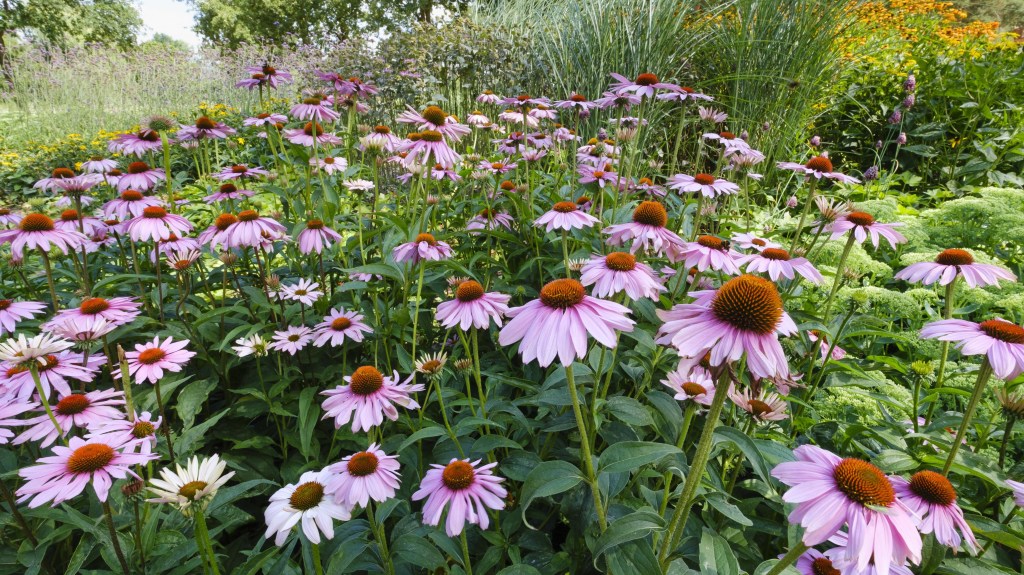
Coneflowers are a staple perennial in many summer gardens, as they bring blooming beauty and butterflies wherever they are planted. Their sturdy structure and up to 6-inch-wide, daisy-like purple blooms create a perfect landing pad for the winged wonders. Because coneflowers grow up to 5 feet high, they extend beautifully along a fence to hide a bland view all summer long. What’s more? Once the blooms are spent for the season, their seed-filled cone centers attract hungry songbirds during the winter months, bringing interest and beauty to your outdoor space year-round.
- USDA Hardiness Zones: 3–8
- Soil conditions: Well-draining soil
- Sun requirements: Give full sun
- Watering schedule: Water once or twice per week when soil is on the dry side
1. Daylily (Hemerocallis hybrida)
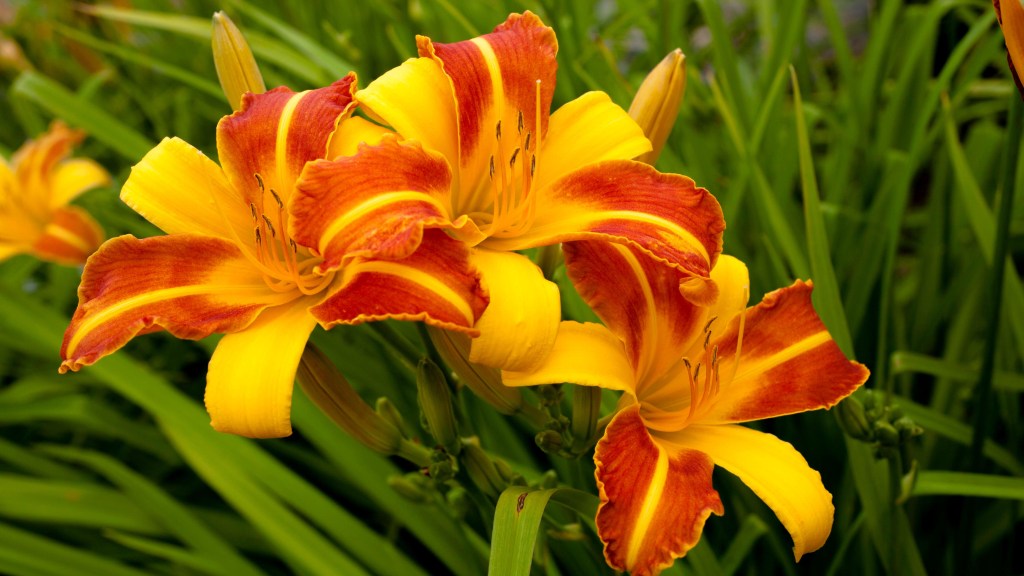
Although they are not true lilies, daylilies resemble the gorgeous blooms with their pointed yellow-to-coral petals and stamens that burst from their centers. They have become a beloved favorite perennial of experienced and novice gardeners alike since the plants are lauded for their ability to thrive in any type of soil with little-to-no upkeep besides weekly watering. Daylilies produce an abundance of beautiful blooms for several weeks starting in midsummer and sometimes again in the fall depending on the variety. They grow up to 48 inches tall and add a pop of color to flower beds, walkways and borders.
- USDA Hardiness Zones: 3–9
- Soil conditions: Well-draining, slightly-acidic soil is best, though they can adapt to most soils
- Sun requirements: Give full sun to part shade
- Watering schedule: Water once or twice per week
Looking for more gardening advice? Check out these stories!
Gardening Pro Says Insects Help These 3 Flowers Thrive in Your Outdoor Space
Planting for Pups: How To Create a Dog-Safe Garden
3 Genius Gardening Hacks for Maintaining the Most Beautiful Yard This Spring
This article originally appeared in our print magazine, First For Women.
















